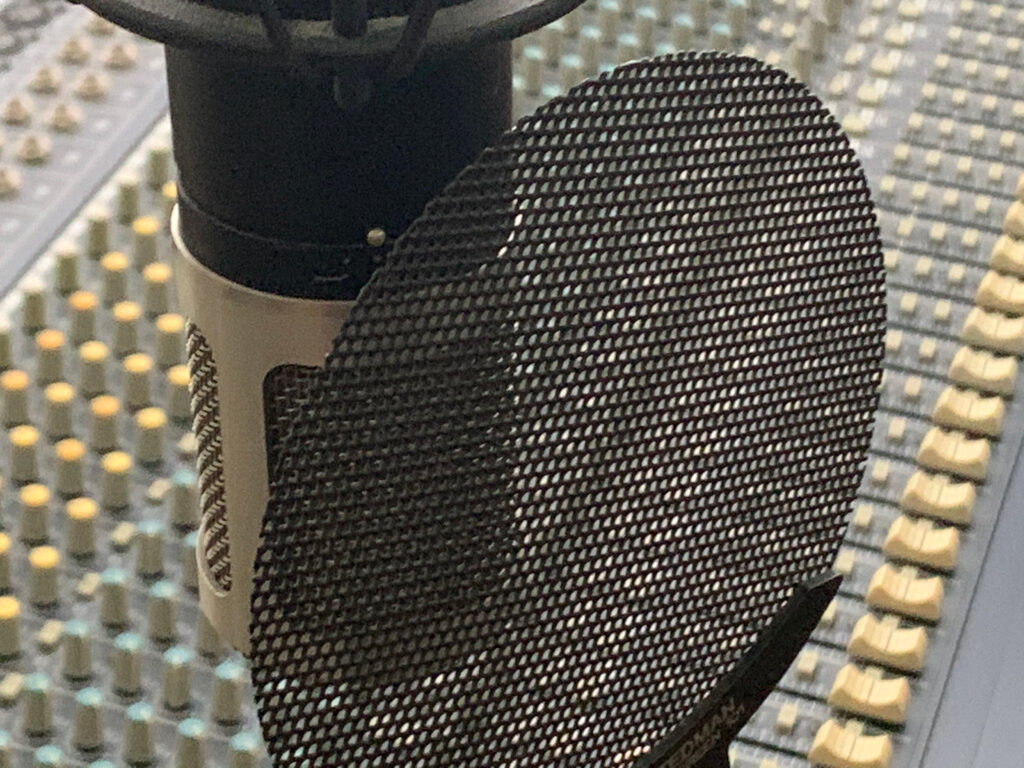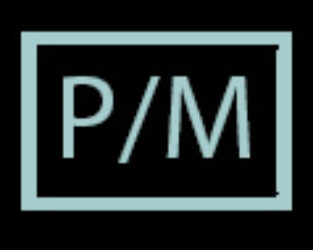
Let’s establish at least one thing from the get-go; if you’ve decided to go through the trouble of producing a voiceover – the spoken message is very important to you. So the best quality possible is a given. There’s a lot that goes into creating a voiceover, including understanding your target audience’s needs, crafting the right message, hiring the right talent, and making good production decisions. For the purpose of this article, I’ll be mostly discussing recording and production.
Pop Goes The Project
First, make sure you have a good quality condenser microphone and audio interface. I recommend recording at 24 bits and at a 44. 1 kHz sample rate, or higher. Record in a studio or booth that has proper isolation and non-reflective surfaces. And, always mount your mic on a proper stand with a shock mount. Without a shock-mount, room vibrations travel through the floor, up the stand, and into the mic. But the most important piece of gear for voiceover work might be the least glamorous of all – the pop filter. A simple device that is placed in front of a microphone, preventing “P,” “B,” and other plosives (sounds with sudden and loud breaths) from overwhelming the mic’s capsule. When that occurs, spikes (or pops) appear in the recorded material and can be very difficult to remove. If you don’t have a proper pop filter, you can make one in a pinch from a wire coat hanger and a nylon stocking!
Step Away From That Mic, Mike!
If you want to avoid hearing all of the juicy details of the talent’s mouth (yuck), make sure they are no closer than 5 inches from the mic and pop filter. Keeping that distance, you’ll also reduce the aforementioned plosives. Condenser microphones are very sensitive, you don’t need to be any closer to get a good level.
Hearing vs Reading
We hear words differently than we read them. Some phrases may work fine for print, but not necessarily for a spoken piece. For instance, a complex sentence separated by commas, like this one, may not translate as well in a voiceover. Shorter and clearer statements are best, so edit your script accordingly. Is your talent having difficulty saying a particular word or phrase? Substitute and get on with the session.
Peaks and Valleys
Dynamics, the difference between the most quiet moment and the loudest moment, can work against you – causing some words or syllables to jump out too much and others to be inaudible. Using a compressor reduces dynamics and keeps the voiceover’s perceived volume consistent throughout. Also, applying a limiter prevents your voiceover from distorting.
Duck and Cover
If your voiceover is sitting on top of a music track, you’ll want to reduce the music’s level while the talent is speaking (a process called “ducking”). You’d be surprised by the number of released commercials and other productions that fail to do this properly – the result being a voiceover that is difficult to hear over the backing track.
Sync or Swim
Unless you’re dubbing a monster movie from the 1960’s, there is nothing more annoying to the audience than a poorly sync’d voiceover track. It’s so distracting, your target audience will likely stomp away angrily, crushing buildings in its path! So check your sync and make adjustments when necessary.
Noise, Noise, Noise!
Even the most attentive engineer can still be faced with hum, hiss, and other noises in a voiceover. Most are environmental, however some can be introduced from an AC source (60 cycle hum). There are several great utilities available, including Waves Z-Noise plugin, that can reduce noise after the recording process. You can also take measures beforehand by recording a “room print” (the sound of a quiet room, which is never perfectly quiet). These recordings are very useful for editing purposes and also for providing noise reduction software with a sample of the noise it needs to remove.
Delivering Quality
Your voiceovers are an important part of your messaging and content. I hope this article helps you avoid some of the more common pitfalls and produce better voiceover content. If you’re not certain how to produce professional audio, ask questions or hire a vendor who has the right equipment and expertise to get the job done for you. Your message is worth it!
Cheers,
MP
